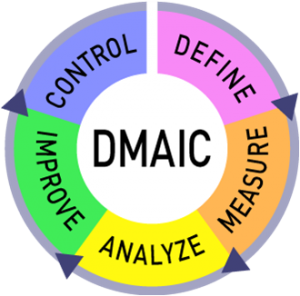Six Sigma
Six Sigma has been a popular management philosophy for years. Motorola first made Six Sigma popular in the 1980s. AlliedSignal embraced it in the early 1990s and then General Electric made it the most popular management philosophy in history. Like anything that becomes popular, misconceptions abound relative to how to implement Six Sigma. Particularly since this management philosophy is based on facts and data being used to make decisions in the organization, a host of statisticians have developed new careers teaching and consulting in this discipline.
However, most statisticians are skilled in the theory of Six Sigma. To make Six Sigma a success in your organization, it must affect everyone in the organisation. Six Sigma is a management philosophy. it requires management’s active involvement, not just their support. The vehicle for management’s initial involvement with Six Sigma is to create the business process management system. The first step in the creation of business process management is to clarify and communicate the strategic business objectives of the organization.
Once the strategic business objectives of the organisation have been generated, management must identify the key processes of the organization and measure their current performance in terms of effectiveness and efficiency. The lowest performing, highest impact processes should be chosen for the tactics of Six Sigma.
Six Sigma, is a powerful business strategy to improve both effectiveness and efficiency. to understand Six Sigma in a simple way, lets take a simple example on using Six sigma to measure and improve Customer satsifaction.
A technical measure of how many unhappy customer experiences per million opportunities is the concept behind Six Sigma. For example, if on any day McDonald’s served one million customers, how many of them experienced what you did during your lunch experience? If only three (yes, three) customers were unhappy with their experience, then McDonald’s achieved Six Sigma on that day. This is because Six Sigma is equivalent to only 3.4 bad customer experiences for every million opportunities. Of course, do you think only 3.4 bad customer experiences at McDonalds occurred today? If 233 bad customer experiences occurred per million McDonald’s customers then McDonald’s would be a Five Sigma company. If 6,210 customers had experienced soggy french fries or an inaccurate order then McDonald’s would be a Four Sigma company. If 66,807 McDonald’s customers opened their lunch bag and found a Big Mac when they had ordered a Quarter Pounder, McDonald’s would be a Three Sigma company. Six Sigma is a measure of customer satisfaction that is near perfection. Most companies are at the two to three sigma level of performance–that means between 308,538 and 66,807 customer dissatisfaction occurrences per million customer contacts.
Companies that have a two to three sigma level of performance experience business problems. They don’t make as much money as they should for their shareholders. Shareholders get mad and begin to take their money elsewhere. Management wants to increase profitability. They fear for their jobs and want to improve the “bottom line.” Often, they think too much in the short term and begin to lay off employees. In the short term, the bottom line looks improved. Of course, the emphasis here is on the short term. With less people in the organization, there is more work for those who remain.
What management forgets by “downsizing” is that if they run a business that is neither effective nor efficient, things will only get worse with less people expected to work harder. Ultimately, businesses that operate by focusing on short-term profitability will result in long-term unprofitability.
The Five Steps of Six Sigma Implementation are
The first step is Define. In the Define step, the project team is formed, a charter is created, customers, their needs and requirements are determined and verified, and, finally, a high-level map of the current process is created.
The second step of the application of Six Sigma is Measure. It is in this second step that the current sigma performance is calculated, sometimes at a more detailed level than occurred at the strategic level of Six Sigma.
The third step in applying Six Sigma is Analysis. During this step, the team analyzes data and the process itself, finally leading to determining the root causes of the poor sigma performance of the process.
The fourth step of applying Six Sigma is Improve. In this step, the team generates and selects a set of solutions to improve sigma performance
The fifth and last step is Control. Here a set of tools and techniques are applied to the newly improved process so that the improved sigma performance holds up over time
RIB Consulting can help you implement six sigma in your organisation through Training and Implementation. RIB Consulting conducts Six sigma courses in India, Kenya and UAE. Please contact us to know more about Six Sigma training in Kenya, India and UAE. We have courses on Six Sigma Yellow Belt Certification, Six Sigma Green Belt Certification, Six Sigma Black Belt Certification and Six Sigma Master Black Belt Certification.
Please contact us on contact@ribcon.com for brochure on Six Sigma Yellow Belt, Green Belt and Black Belt certification





